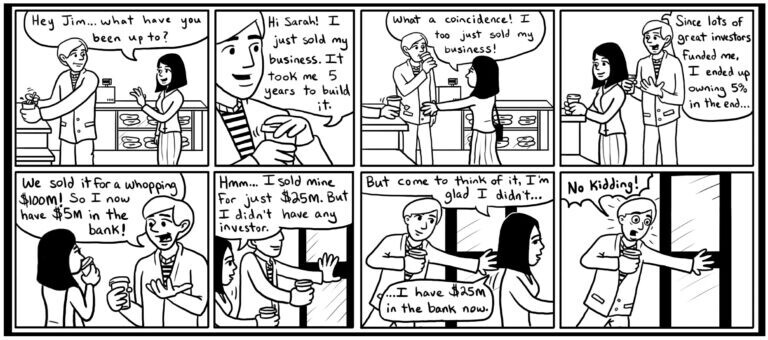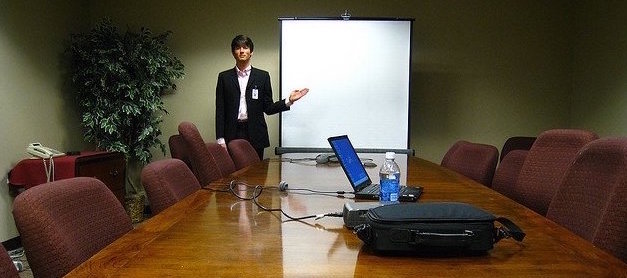Bootstrapping Using Services from The Netherlands to a $300M+ Exit: Quintiq and ActiVote Founder Victor Allis (Part 2)
Sramana Mitra: What you’re describing is a track that we have called bootstrapping using services. It’s a tried-and-true path in which a lot of entrepreneurs have built companies. We have great regard for this method.
The services work, I understand. The product that you were developing, what was going to be in that product? How well did you understand the product, the requirements, and the positioning? What problem were you going to solve? How well did you understand all that?
>>>Featured Videos
Bootstrapping a RegTech Venture to $20M: PerformLine CEO Alex Baydin (Part 6)
Sramana Mitra: At this point, it’s more of executing the business that you’ve described so far?
Alex Baydin: Yes, that was the last pivot that got us sustainable traction. We’re still very focused on consumer finance because it’s such a big category. As I mentioned, the platform and the technology provide this level of sales, marketing surveillance, and remediation across six channels: Web, Call Center, Email, Messages, Social, and Documents.
Sramana Mitra: What kind of revenue level are you at now?
>>>Best of Bootstrapping: Bootstrapped a Marketplace from Brazil

If you haven’t already, please study our Bootstrapping Course and Investor Introductions page.
Diego Gomes, CEO Co-founder of Rock Content, had built a terrific content marketing company from Brazil when we spoke in 2020. He bootstrapped first, raised money later, and had then acquired a sizable US company to scale. Excellent story!
Sramana Mitra: Let’s start at the beginning of your journey. Tell me about your background. Where are you from? Where were you raised?
Diego Gomes: I am from Brazil. I lived most of my life in Belo Horizonte. I started our company Rock Content around seven years ago with two co-founders, Edmar Ferreira and Vitor Pecanha.
Video FAQs
Can 1M/1M Help Me Raise Money?
How Does 1M/1M Democratize Entrepreneurship Education?
How Does 1M/1M Democratize Management Consulting?
When Is The Right Time To Join 1M/1M?
Can 1M/1M Help Me With Business Development?
Can 1M/1M Help Me With Market Sizing?
Can 1M/1M Help Me Validate My Product?
Will I Have Private 1-on-1 Sessions In 1M/1M?
How Does 1M/1M Help Entrepreneurs Connect With Silicon Valley?
Mentoring or Consulting?
Why Does 1M/1M Charge $1000 a Year?
Why Does 1M/1M Partner With Local Organizations?
Why Don\’t Mentoring Networks Work?
Why Is It Important To Study With 1M/1M Now?
Dan Stewart Story
Vikrant Mathur Story
AppLovin Struggles, But Focuses on NFTs for Growth

The global mobile application market is estimated to grow at 13% CAGR through 2030 from $187.58 billion in 2021. Despite the strong projections, AppLovin (Nasdaq:APP) is not very optimistic about the future. Its recent second quarter results failed to meet market expectations. The macro economic uncertainty caused it to drop its outlook as well. But the company is banking on the emerging trend of NFTs to drive growth.
>>>Bootstrapping Using Services from The Netherlands to a $300M+ Exit: Quintiq and ActiVote Founder Victor Allis (Part 1)

Victor bootstrapped Quintiq to $30M, raised funding, and then sold the company for over $300M. ActiVote is his second startup, currently self-funded.
Sramana Mitra: Let’s start from the beginning. Where are you from? Where were you born, raised, and in what kind of background?
>>>Bootstrapping a RegTech Venture to $20M: PerformLine CEO Alex Baydin (Part 5)
Alex Baydin: They had the same compliance constraints that they had in terms of not being deceptive or misleading. There was a lot more probability that something would go wrong in a free-form phone call. We decided to build a speech analytics module and that’s where we started thinking about our product vision. However, our customers are interacting with their prospects, and we wanted to be able to offer this layer of protection so they can move fast.
We set upon a roadmap of launching a new channel every 18 months or so. We added a call center. Now we had a nice cross-sell engine play. If we’re doing a good job, we could get introduced to the call center compliance team and sell them capacity as well. Then we launched email compliance, followed by messaging, and then social more recently.
>>>Best of Bootstrapping: Bootstrapped a Fast Growth Company Using Services

If you haven’t already, please study our Bootstrapping Course and Investor Introductions page.
Gurman Hundal, Co-founder of MiQ, had bootstrapped a fast growth company using services when we spoke in 2016. Read about his impressive journey.
Sramana Mitra: Let’s start at the very beginning of your journey. Where are you from? Where were you born, raised, and in what kind of background?
Gurman Hundal: I was born in England in a town about 30 miles from London. My family is from the northern state of Punjab in India. Even though I was born in England, I couldn’t speak English till I was about six years old. I have a British-Indian upbringing. My parents owned their own shoe shop in a shopping mall near where we live. I got an early exposure to family-run organizations. I went through the educational system within England. I went to University of Kingston where I studied Business. It was there where I started my career.
October 27 – 594th 1Mby1M Mentoring Roundtable for Entrepreneurs

Entrepreneurs are invited to the 594th FREE online 1Mby1M Mentoring Roundtable on Thursday, October 27, 2022, at 8 a.m. PDT/11 a.m. EDT/5 p.m. CEST/8:30 p.m. India IST.
If you are a serious entrepreneur, register to “pitch” and sell your business idea. You’ll receive straightforward feedback, advice on next steps, and answers to any of your questions. Others can register to “attend” to watch, learn, and interact through the online chat.
You can learn more here and REGISTER TO PITCH OR ATTEND HERE. Register and you will receive the recording by email, even if you are unable to attend. Please share with any entrepreneurs in your circle who may be interested. All are welcome!
